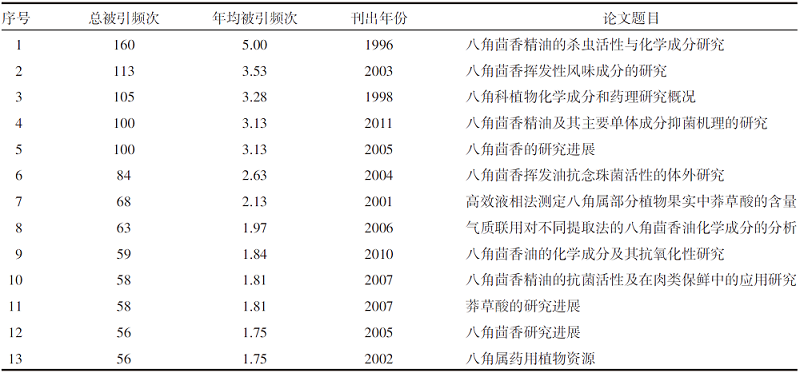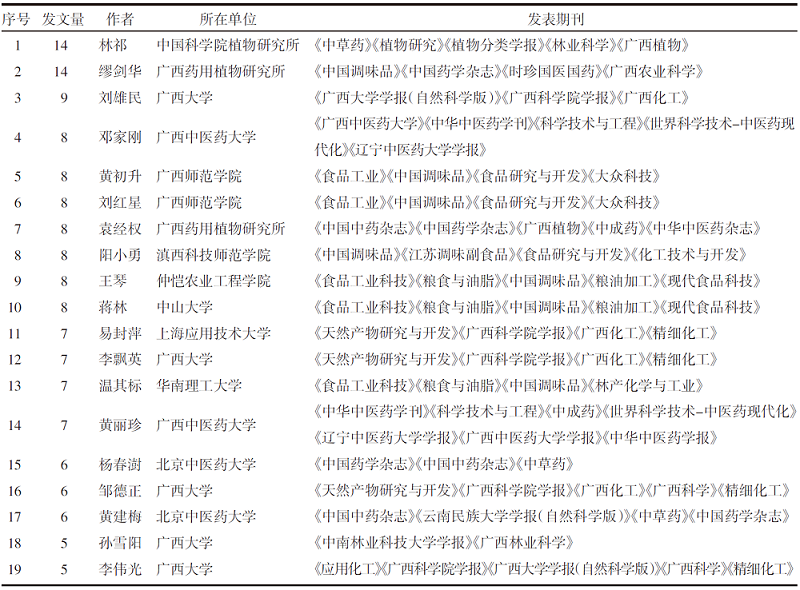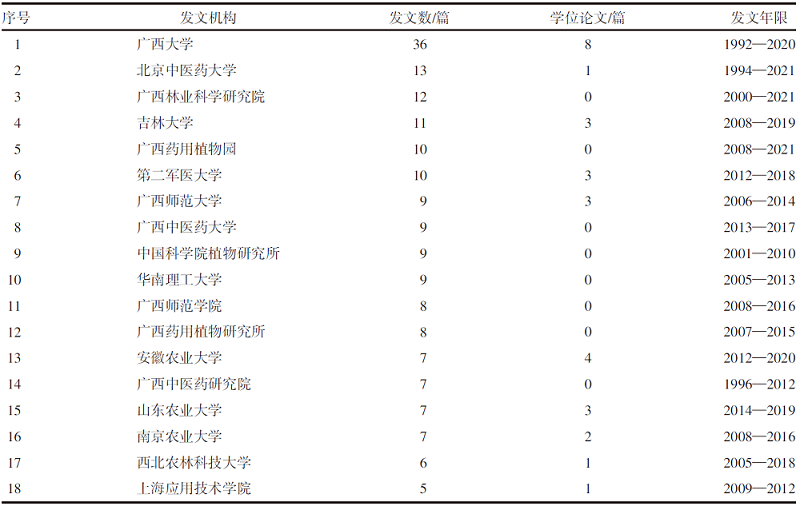Journal of Northern Agriculture ›› 2022, Vol. 50 ›› Issue (5): 126-134.doi: 10.12190/j.issn.2096-1197.2022.05.18
• Agriculture economics · Agriculture information technology • Previous Articles
Literature analysis of Illicium study based on bibliometric method
LI Xia1, ZHAO Miaomiao1, WANG Shibao2,3, HUANG Dongping4, HE Jie4, CUI Yanli5, HE Zhipeng6, LI Chongyong4
- 1. Faculty of Agricultural and Forestry Technology and Bioengineering,Hanzhong Vocational and Technical College,Hanzhong 723000,China
2. Faculty of Pharmacy,Hanzhong Vocational and Technical College,Hanzhong 723000,China
3. Qinba Mountains Institute of Pharmaceutical(Edible)Botanty,Hanzhong Vocational and Technical College,Hanzhong 723000,China
4. Hanzhong Center for Food and Drug Supervision,Inspection and Testing,Hanzhong 723000,China
5. Department of Basic Courses Teaching,Hanzhong Vocational and Technical College,Hanzhong 723000,China
6. Medical College,Shaanxi Institute of International Trade & Commerce,Xi′an 712046,China
CLC Number:
- Q949.747.1

















